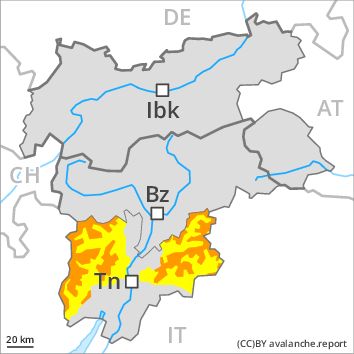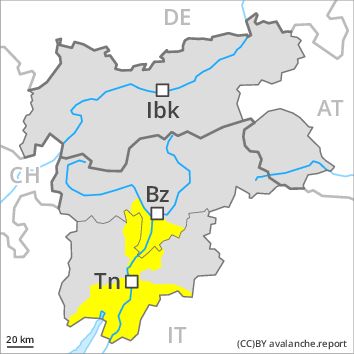Regions
Latemar, Southern Adamello, Primiero - Pale di S. Martino, Adamello - Presanella, Northern Brenta - Peller, Southern Brenta, Fassa Valley, Sole, Pejo and Rabbi, Southern Lagorai, Northern Lagorai, Maddalene, Paganella, Pine' - Mocheni Valley

Danger level
Avalanche Problem
Wind-drifted snow above the treeline, N-NE-E-SE-S-SW-W-NW
Gliding snow above 2200m, N-NE-E-SE-S-SW-W-NW

The wind slabs represent the main danger.
The fresh and somewhat older wind slabs are in many cases extensive and in some cases prone to triggering. Even single persons can release avalanches as before, in particular adjacent to ridgelines. Ski touring and other off-piste activities, including snowshoe hiking, call for experience in the assessment of avalanche danger and careful route selection, in particular on steep slopes above approximately 1800 m as well as on wind-loaded slopes. In steep terrain there is a danger of falling on the icy crust. Below approximately 2200 m small and, in isolated cases, medium-sized gliding avalanches are possible.
Snowpack
The wind slabs have formed in particular in gullies and bowls, and behind abrupt changes in the terrain. These are in many cases extensive and in some cases prone to triggering. In some cases the various wind slabs have bonded still only poorly with each other and the old snowpack. The snowpack will be moist below approximately 2200 m.
Tendency
A latent danger of gliding avalanches exists, in particular at the base of rock walls below approximately 2200 m.
